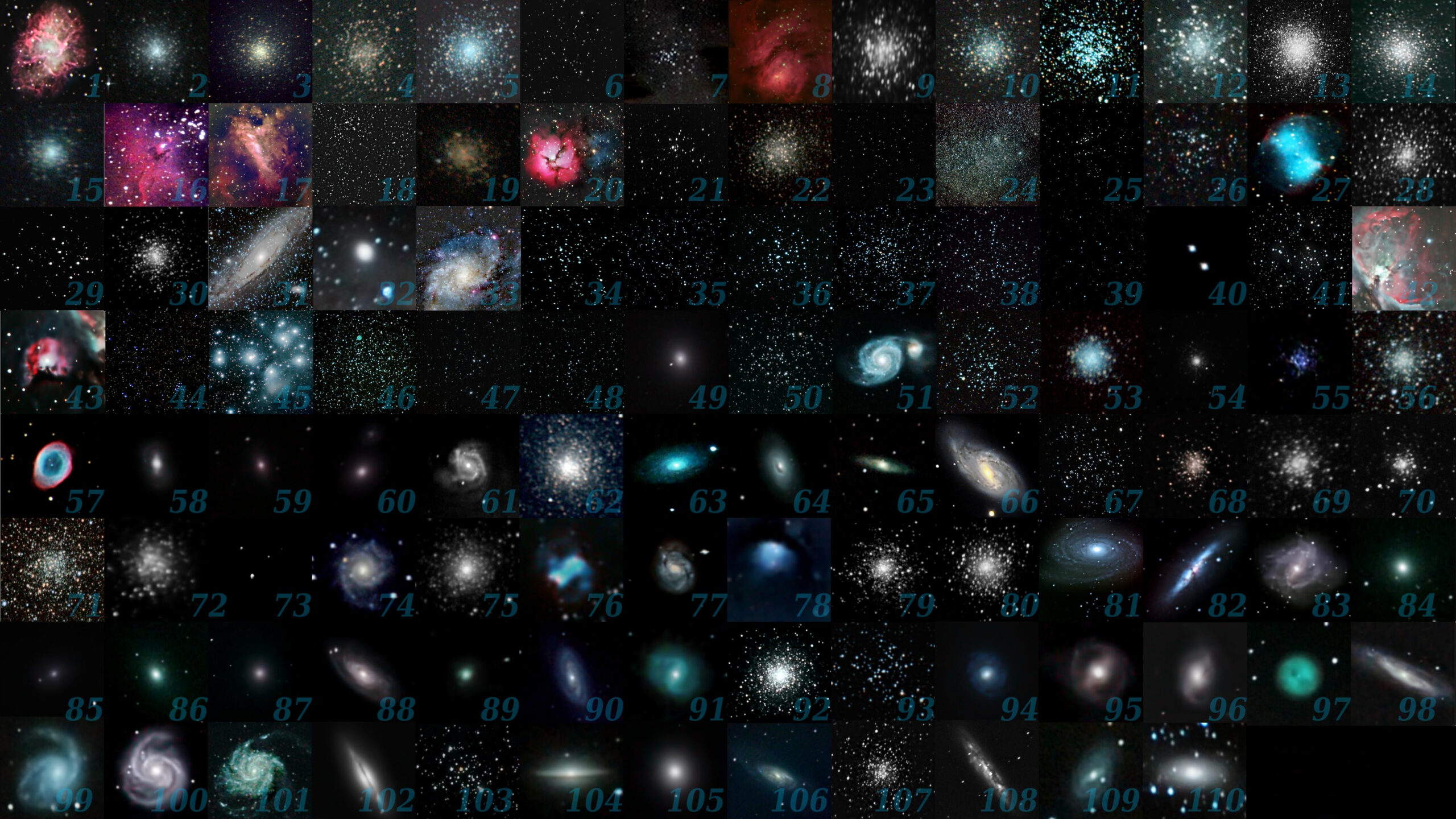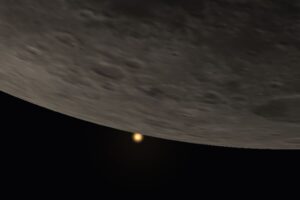Hey there, fellow space enthusiasts! Buckle up, because the cosmos is throwing the party of the millennium, and you’re invited! Get ready to mark your calendars for the 2024 Messier Marathon from April 6th to April 11th 2024. It’s not your typical stargazing night; it’s a celestial adventure waiting to unfold. Whether you’re an old hand at deciphering the constellations or just dipping your toes into the cosmic pool, this event promises to dazzle you with distant galaxies, mesmerizing star clusters, and enchanting nebulae. Don’t even think about missing out on this cosmic spectacle!
What’s the Messier Marathon?
So, what’s the buzz about the Messier Marathon? Well, picture this: a cosmic challenge that lures amateur astronomers into a thrilling journey through the night sky. Once a year, this mind-blowing event unfolds, inviting you to test your stargazing prowess by observing all 110 Messier objects in a single night. It’s like a treasure hunt in the vastness of space – an opportunity to witness the universe’s wonders firsthand! Can you handle the challenge?
Where and When?
Now, you might be wondering where the best place to catch this cosmic show is. Look no further than Astroport! With their crack team of experts, you can witness all 110 Messier objects in the span between sunset and sunrise. From 6th April to 11th April 2024. Plan your primary weekend shenanigans on March 9/10 and keep April 8/9 as your stellar backup plan. Astroport is your one-stop-shop for all things astronomical – dive in and soak up the cosmic vibes!
Ready to join the cosmic fiesta? Head to Astroport locations in Rajasthan, Kerala, Karnataka, and Uttarakhand for the Messier Marathon! Save the dates, gather your cosmic crew, and get ready to be awestruck by the celestial wonders.
Strategic Planning: The Cosmic Marathon
Completing this cosmic marathon is no walk in the park – it’s a meticulous preparation, a test of endurance, and a strategic plan, much like a long-distance running event. Observers, gear up – you’ve got to consider the weather conditions, sky clarity, moon phase, and terrain to up your chances of success. It’s not just about peering through a telescope; it’s about conquering the elements and claiming victory over the cosmic expanse.
Get the Right Equipment: Size Matters in the Cosmic Quest!
So, you’re gearing up for the Messier Marathon – the ultimate cosmic scavenger hunt. But before you embark on this celestial adventure, let’s talk equipment. At the very least, you’ll need a 3-inch (80mm) telescope to get a piece of the action. This size works under the darkest sky conditions, but here’s the cosmic scoop – if you can lay your hands on a larger telescope with more power, well, that’s the stellar choice! At Astroports, we’ve got you covered with a stellar selection of Telescopes and Binoculars, including gems like the Meade-LX90 8-inches ACF, Dobsonian 8-inches (GSO), and Dobsonian 16-inches (GSO). It’s time to gear up and get ready for a cosmic rendezvous!
Find the Right Location: Where Darkness Reigns Supreme
Darkness is the MVP when it comes to the Messier Marathon. To ensure success, you need to scout out a location with minimal light pollution. This isn’t your average stargazing session – it’s a marathon, and you don’t want any unwanted interference! Choose a night where the moon won’t play spoilsport with its own brightness (more on that later).
Reducing light pollution is the key to unlocking the full potential of the Messier Marathon. Picture this – you’ll be scanning the entire sky, from the horizon to the zenith, as the night unfolds. Too much light pollution can throw shade on your ability to spot Messier objects near the horizon, where atmospheric conditions are already playing tricks. So, plan your cosmic escape and be ready to travel at least two hours away from the bright lights of a major urban core. The farther, the better – because in this cosmic quest, darkness is your best friend.
Moon Matters: Timing is Everything
Now, let’s talk about the moon – it’s majestic, but it can be a tricky companion during the Messier Marathon. To maximize your cosmic experience, choose a night when the moon won’t steal the show with its own brilliance. Timing is everything, and you don’t want lunar interference messing with your stargazing vibes.
To ensure the moon doesn’t overshadow the cosmic wonders, plan your Messier Marathon on nights when the moon is taking a backseat, allowing the stars to shine bright and steal the cosmic spotlight.
Astroports Wisdom: Your Celestial Oasis
At Astroports, we understand the cosmic cravings of stargazers like you. That’s why we provide a haven for cosmic enthusiasts, offering a range of telescopes and binoculars that can elevate your Messier Marathon experience. Whether you’re eyeing the Meade-LX90 8-inches ACF or the powerful Dobsonian 16-inches (GSO), we’ve got the tools to make your cosmic journey unforgettable.
So, gear up, find your cosmic sweet spot far away from the urban glow, time your adventure to dodge the moon’s luminous interference, and trust Astroports to be your celestial oasis. The Messier Marathon awaits, and the cosmos is ready to unveil its wonders – are you ready for the cosmic quest of a lifetime? Get your gear, choose your spot, and let the celestial adventure begin! 🌌✨
The Cosmic Marathon Route
Picture this: you kick off the marathon with a front-row view of galaxies M77 and M74, hanging low in the western sky at dusk before vanishing into the abyss below the horizon. Then, it’s a systematic progression through the list of Messier objects, tackling densely populated regions like Sagittarius (15 objects) and Virgo (11 objects). As dawn paints the sky in hues of dawn, you race against time to catch a glimpse of the final celestial objects, including the elusive globular cluster M30, before the sun steals the spotlight.
Ideal Observation: Latitude Matters
While the Messier Marathon can be attempted from most northern latitudes, it hits its sweet spot for observation between approximately 20 degrees south and 55 degrees north. It’s like finding the cosmic Goldilocks zone – not too hot, not too cold, just right for a night of celestial wonders. Astronomers usually pick weekends closest to a new moon to amplify the experience, as the sky is at its darkest during this time. Get ready to be starstruck!
FAQs – Your Burning Questions Answered
1. Can I observe the Messier Marathon from anywhere?
Absolutely! While it’s doable from most northern latitudes, the ideal range is between approximately 20 degrees south and 55 degrees north.
2. What’s the best time to embark on this cosmic journey?
Plan your weekends closest to a new moon for the ultimate stargazing experience. The darker the sky, the brighter the celestial wonders.
3. How do I prepare for the Messier Marathon?
Pack your telescope, weather-appropriate gear, and a cosmic curiosity. Check the weather, study the sky, and strategize your marathon route. It’s a celestial adventure – be prepared!
Ready to join the cosmic fiesta? Head to Astroport locations – Astroport Sariska, Rajasthan Astroport Dwarasamudra, Karnataka, Astroport Ajmer, Rajasthan, Astroport Ashtamudi, Kerala, & Astroport Corbett, Uttarakhand for the Messier Marathon! Save the dates, gather your cosmic crew, and get ready to be awestruck by the celestial wonders.
To know more, chat with us on WhatsApp or Call us – +91-9278767700 [9-ASTRO-7700]
So, fellow cosmic adventurers, mark March’s and April’s new moon on your calendar, because the 2024 Messier Marathon is a cosmic rendezvous you wouldn’t want to miss. From galaxies to star clusters, this night promises to unveil the grandeur of the cosmos. With Astroport as your guiding star, you’re in for an astronomical treat. Gear up, plan your weekends, and get ready for a marathon that transcends the earthly realm – The universe is Calling!






